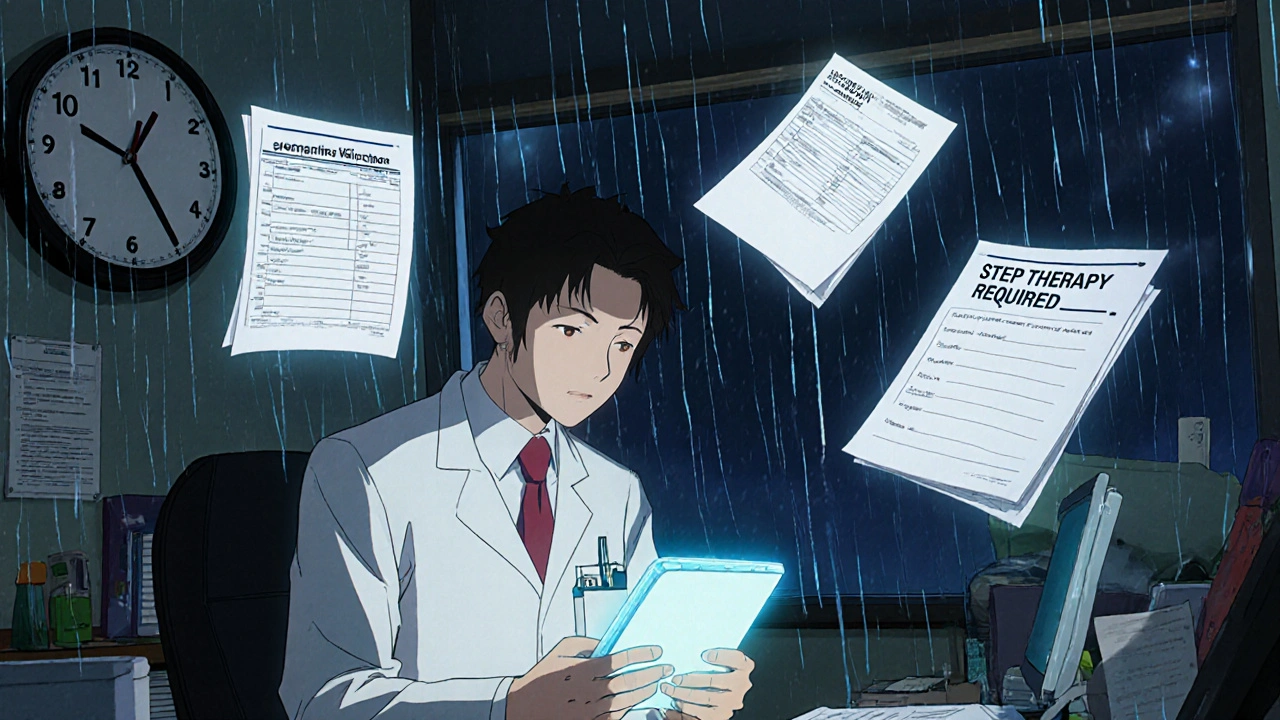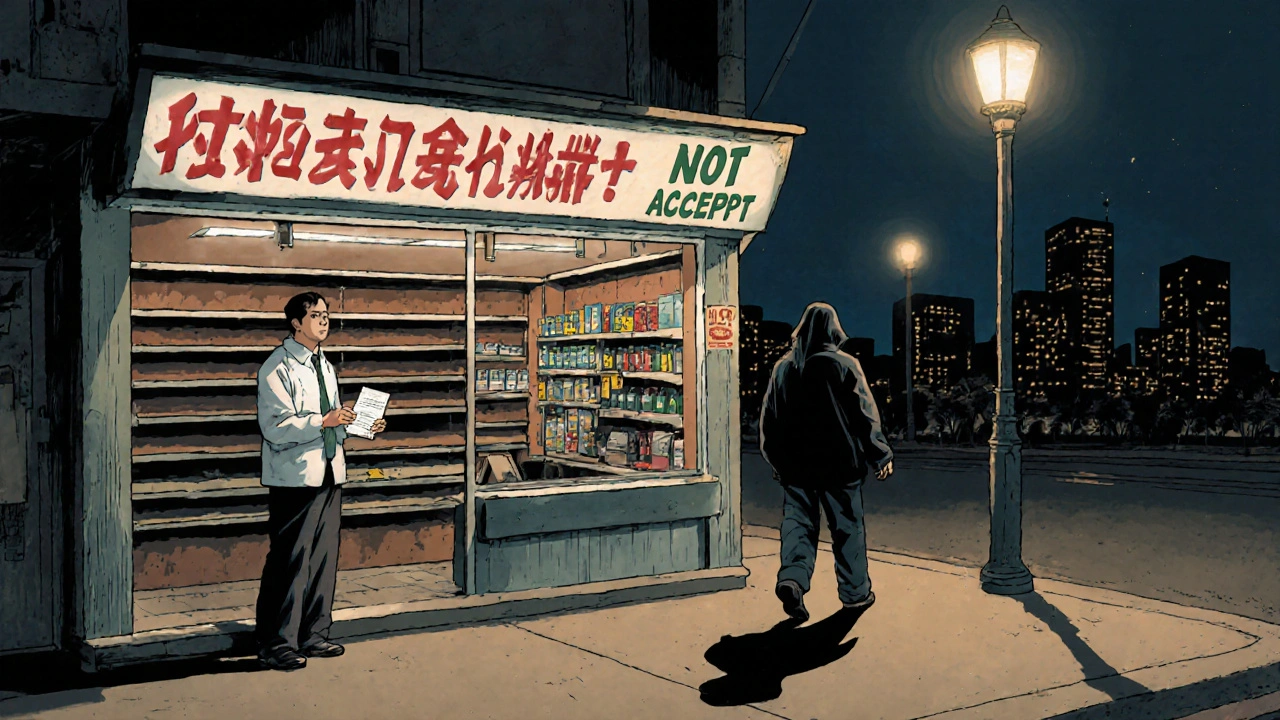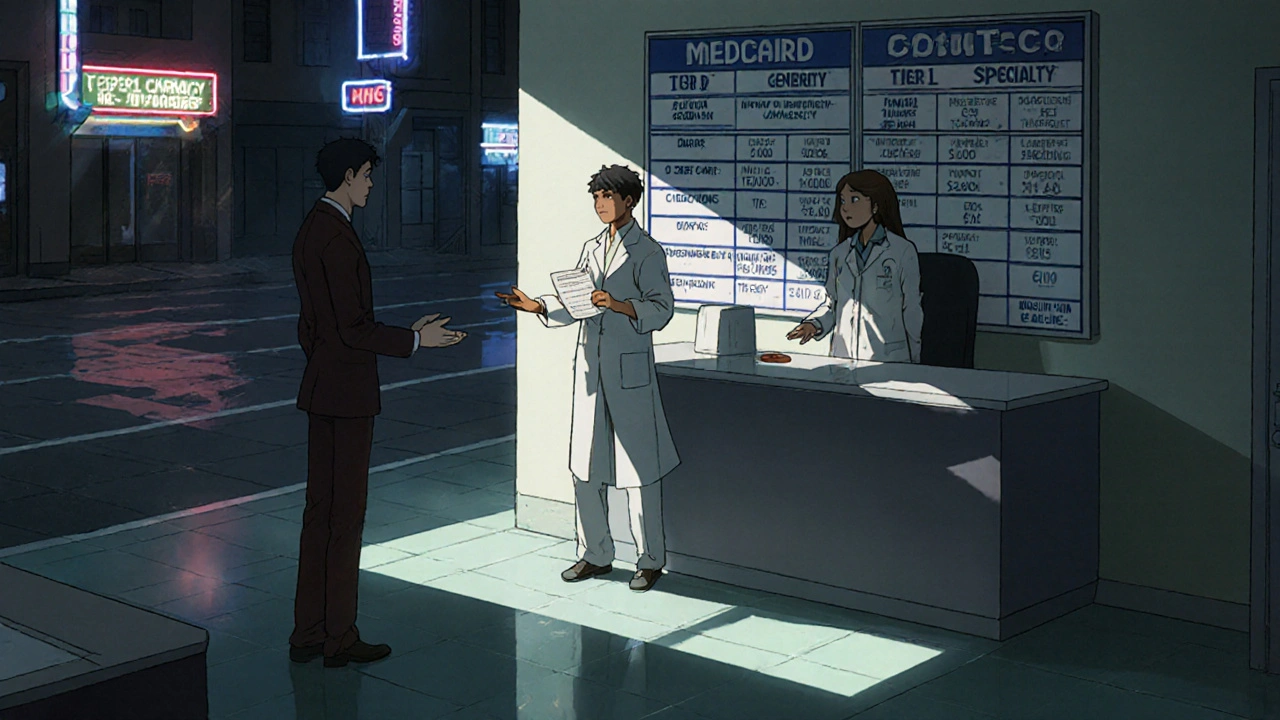When you’re on Medicaid, getting your prescriptions shouldn’t be a maze. But if you’ve ever tried to fill a generic drug across state lines, you know it’s not that simple. One state might automatically swap your brand-name pill for a cheaper generic. Another might make you jump through hoops just to get the same medicine. And in some places, you’ll pay $1.50 for it. In others, you’ll pay $8 - if you’re lucky enough to get it at all.
Why Medicaid Generic Coverage Isn’t the Same Everywhere
Medicaid is a federal-state partnership, and that means states have a lot of freedom to run their own pharmacy programs. Even though the federal government sets basic rules - like requiring drug manufacturers to pay rebates and banning coverage for certain drugs like weight-loss pills - each state decides how to cover generics. That’s why your experience in Texas can be totally different from someone in Vermont. All 50 states and D.C. cover outpatient prescription drugs under Medicaid. That’s not optional anymore - it’s standard. But how they cover them? That’s where things get messy.Automatic Generic Substitution: Where It’s Required (and Where It’s Not)
At least 41 states now require pharmacists to substitute a generic drug when it’s available and therapeutically equivalent - unless the doctor says no. This is called automatic generic substitution. It’s meant to save money and keep patients on medication. In Colorado, for example, the law says a pharmacist must switch you to the generic unless the prescriber writes "dispense as written" or if the brand drug is actually cheaper. In California, the rule is similar, but the state doesn’t force substitutions as aggressively. Some states, like New York, let pharmacists make the call without checking with the doctor first. Others, like Florida, require the prescriber to be notified. The big difference? Some states let pharmacists switch drugs without telling the doctor. Twelve states allow this. Twenty-eight require documentation that the generic is therapeutically equivalent. That means more paperwork, more delays, and more confusion for patients.Formularies and Tiers: What’s Covered and What’s Not
Every state uses a formulary - a list of drugs they’ll pay for. Most split them into tiers. Tier 1 is usually generics. Tier 2 is brand names. Tier 3 might be specialty drugs. But here’s the catch: just because a drug is on the formulary doesn’t mean you can get it easily. CVS Caremark, which manages pharmacy benefits for 18 Medicaid programs, lists generics in Tier 1. But that doesn’t mean every generic is covered. States pick which ones. For instance, one state might cover a generic version of metformin but not another brand. Why? Cost. Negotiations. Or sometimes, politics. Some states have open formularies - almost everything’s covered. Others have strict lists. Colorado’s Preferred Drug List (PDL) only includes generics that meet clinical criteria. If you need a drug for acid reflux, you might have to try three other generics first. That’s called step therapy. At least 32 states use it for certain drug classes - especially for pain meds, antidepressants, and heart drugs.Prior Authorization: The Hidden Hurdle
Even if your drug is on the formulary, you might still need prior authorization. That’s when your doctor has to call or submit paperwork to prove you need it. For generics? Yes, even generics. In Colorado, most preferred generics don’t need prior auth. But if it’s not on the preferred list? You’re stuck. Opioids? You can’t get more than 8 pills a day. Initial prescriptions? Limited to 7 days. Other states have similar rules, but they’re not always written down clearly. A 2024 University of Pennsylvania study found that when Medicaid patients get denied a medication switch - even to a cheaper generic - their hospital visits go up by 12.7%. Why? Because they stop taking their meds. Or they go to the ER because their condition flares up.
Copayments: How Much You Pay - And Who Pays Nothing
Federal rules let states charge up to $8 for non-preferred generics if your income is under 150% of the federal poverty level. But most states charge less. Some charge $0. In New York, most Medicaid beneficiaries pay $1 for generics. In Texas, it’s $3. In Vermont? Nothing. Some states waive copays entirely for certain groups - like kids, pregnant women, or people with chronic illnesses. But here’s the twist: if you’re on both Medicaid and Medicare (which 17 million people are), you can switch your drug plan once a month. That means your copay could change every 30 days. No one’s telling you. No one’s sending a notice. You just show up at the pharmacy and get a surprise bill.Reimbursement Rates: Why Some Pharmacies Won’t Participate
Pharmacies get paid by Medicaid for filling prescriptions. But the payment? It’s often barely above the cost of the drug. In some states, a pharmacy might lose money on a $4 generic because Medicaid pays $3.50. That’s why participation varies wildly. In Vermont, 98.2% of community pharmacies accept Medicaid. In Texas? Only 67.4%. That’s not because pharmacists don’t want to help. It’s because they can’t afford to. The National Community Pharmacists Association says reimbursement rates are the #1 reason pharmacies drop out of Medicaid networks. And when that happens, patients have to drive farther, wait longer, or skip their meds.What’s Changing in 2025 and Beyond
The federal government is pushing for change. In late 2024, CMS proposed a rule that would force all states to cover anti-obesity drugs - like semaglutide - under Medicaid. That’s a big deal. These drugs cost over $1,000 a month. If states have to cover them, they’ll need to cut back elsewhere. Probably on generics. There’s also a bill floating in Congress that would stop generic drugs from getting inflation-based rebates. Right now, manufacturers pay back a portion of price hikes. If that ends, states could lose $1.2 billion a year in rebates. That money helps pay for all Medicaid drugs - not just generics. So expect more restrictions, more prior auth, and higher copays. Meanwhile, states are experimenting. Michigan started a value-based program for diabetes generics. Instead of paying per pill, they pay based on how well patients control their blood sugar. Results? 11.2% lower costs and better adherence.
What This Means for You
If you’re on Medicaid and take generics:- Know your state’s formulary. Ask your pharmacist for the Preferred Drug List.
- Ask if your drug is on Tier 1. If not, ask why - and if there’s a cheaper alternative.
- Don’t assume your copay is the same every month. Check with your pharmacy or Medicaid office.
- If your prescription is denied, ask for a formal appeal. Many denials get overturned.
- If your pharmacy won’t fill your script, try another. One might be in-network even if the first one isn’t.
What Providers Need to Know
Doctors spend an average of 15.3 minutes per patient just handling prior authorizations for generics. That’s $8,200 a year in lost time per provider. To save time and keep patients on meds:- Use your state’s electronic prior authorization system - don’t call.
- Write "dispense as written" only when absolutely necessary.
- Know which generics your state prefers. Use them first.
- Check if your state allows therapeutic interchange. That means you can switch to a similar generic without restarting the process.
FAQ
Do all states cover generic drugs under Medicaid?
Yes. All 50 states and the District of Columbia cover outpatient generic drugs for Medicaid enrollees. While federal law technically makes pharmacy benefits optional, every state has chosen to include them as part of their Medicaid program since 2025.
Can a pharmacist switch my brand-name drug to a generic without asking me?
In 41 states, yes - if the generic is FDA-approved as therapeutically equivalent. But in 12 states, pharmacists can make the switch without telling your doctor. In 28 states, they must document the substitution. Always check your state’s pharmacy laws - they vary widely.
Why is my generic drug not covered even though it’s cheaper?
States use formularies to control costs. Even if a generic is cheaper, it might not be on the preferred list. Some states only cover generics that meet specific clinical criteria or have been negotiated at the lowest price. Others prioritize certain manufacturers or limit coverage to one generic per drug class.
How do I find out what’s on my state’s Medicaid formulary?
Visit your state’s Medicaid website and search for "Preferred Drug List" or "PDL." You can also ask your pharmacist, doctor, or Medicaid caseworker. Some states, like Colorado and California, post downloadable PDFs with tier levels and prior authorization rules.
Can I be charged more than $8 for a generic drug on Medicaid?
Federal rules cap copays at $8 for non-preferred generics if your income is under 150% of the federal poverty level. But many states charge less - $1, $3, or nothing at all. If you’re asked to pay more, ask if you qualify for a waiver or if the pharmacy is in-network.
What should I do if my Medicaid claim for a generic drug is denied?
Request a formal appeal in writing. Many denials are overturned on appeal, especially if your doctor provides clinical documentation. You can also ask your pharmacist to contact the pharmacy benefit manager - sometimes they can override the denial on the spot. Keep records of all communications.
Why do some pharmacies refuse to fill my Medicaid prescription?
Many pharmacies lose money on Medicaid reimbursements, especially for low-cost generics. If the payment is below the cost of the drug plus staffing, they may opt out of the network. This is common in states like Texas and Florida. Try calling nearby pharmacies - one may be in-network even if the first one isn’t.

9 Comments
Michelle N Allen November 27 2025
So basically if you’re on Medicaid you’re just gambling every time you need a prescription
One day your generic is covered, next day it’s not, and no one tells you until you’re at the counter
Why does this even exist
It’s not like people are choosing to be poor
Madison Malone November 29 2025
I get how confusing this is, especially if you’re juggling work, kids, and a chronic condition
I had a friend who skipped her blood pressure meds for months because she didn’t know the generic switched
She ended up in the ER and it broke my heart
Someone should make a simple guide for each state-like a one-page cheat sheet
Not everyone has time to dig through PDFs
Graham Moyer-Stratton November 29 2025
This is what happens when you let 50 bureaucracies run a single program
Stop the state-by-state madness
Federal standard or nothing
tom charlton November 30 2025
It is imperative to recognize that the current fragmentation of Medicaid pharmacy policies creates systemic inequities that disproportionately impact vulnerable populations
The lack of uniformity in substitution protocols, prior authorization requirements, and reimbursement structures undermines the fundamental principle of equitable healthcare access
Standardization at the federal level is not merely desirable-it is ethically and clinically necessary
Jacob Hepworth-wain December 1 2025
My cousin in Texas got denied her generic insulin because it wasn’t on the preferred list
She had to call her doctor three times, wait a week, then find a different pharmacy
It’s exhausting
Why can’t we just make the cheapest option the default unless there’s a real medical reason not to
It’s not rocket science
Craig Hartel December 3 2025
Just wanted to say thanks for laying this out so clearly
I’m from Michigan and we’ve got that value-based diabetes program-my brother’s copay dropped to zero because his sugar’s been stable for 6 months
It’s not perfect but it’s a step in the right direction
People need to know these things exist
Chris Kahanic December 4 2025
Pharmacies losing money on generics is a structural issue
Reimbursement rates need to reflect actual costs, not political compromises
Otherwise, rural pharmacies close, and patients drive 40 miles for a $1 pill
It’s not a bug-it’s a feature of the current system
Geethu E December 5 2025
Same thing happens in India with public health schemes
But here at least you can argue with the pharmacist and get it fixed
In some U.S. states, you’re just told no and that’s it
Why do we treat medicine like a lottery
People are dying because of paperwork
anant ram December 6 2025
Wait, wait, wait-did you know that in 12 states, pharmacists can switch your brand to generic without even telling your doctor? That’s a huge deal! And in 28 states, they have to document it, which adds delays, which means people skip doses, which means more ER visits, which means higher costs overall! And don’t even get me started on how some states cap copays at $8, but others charge $0, and others make you jump through hoops even for the cheapest generic! This isn’t healthcare-it’s a maze designed to confuse people who are already struggling!